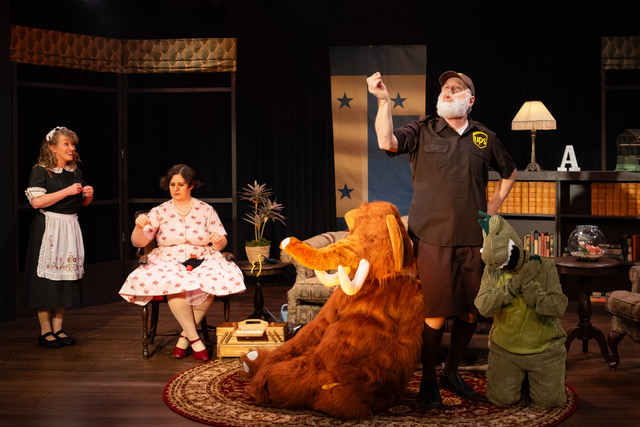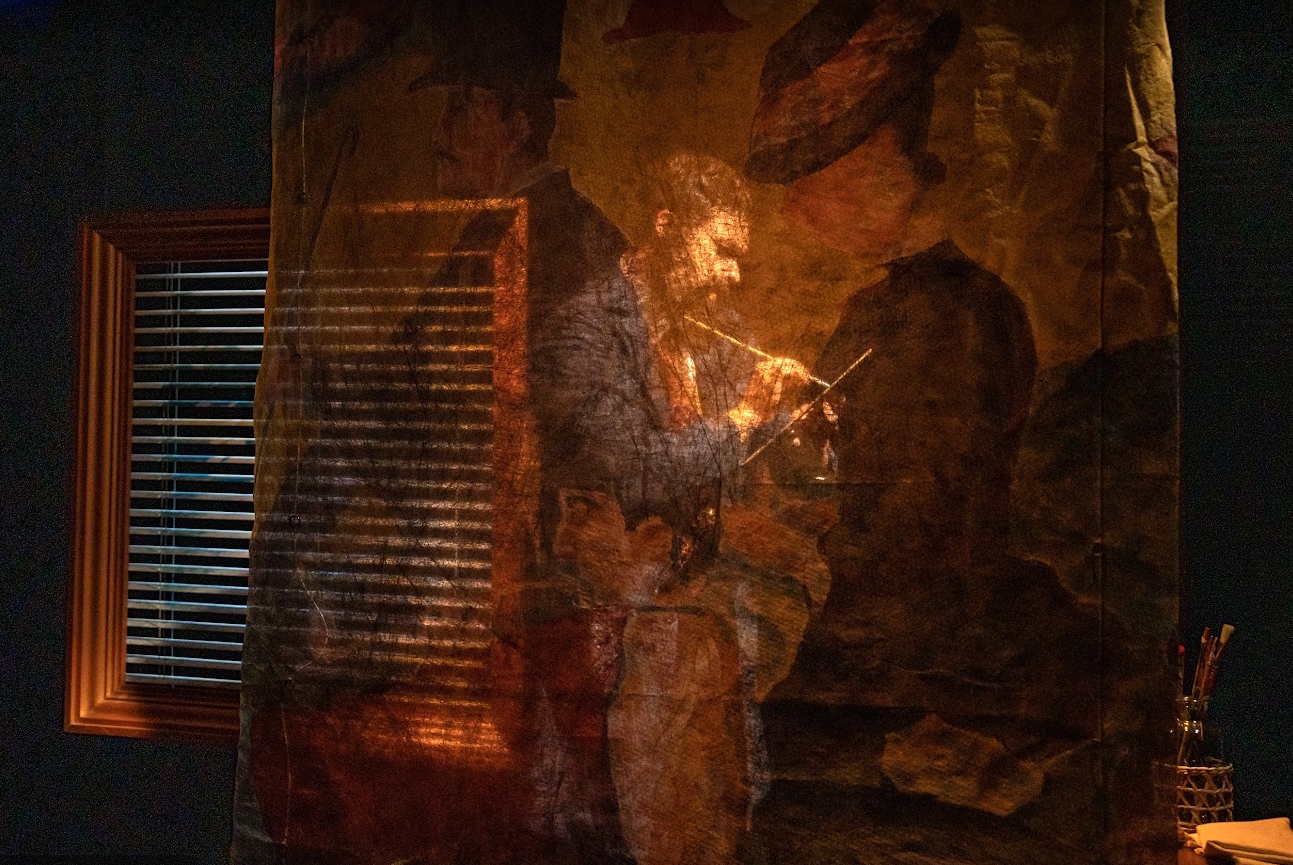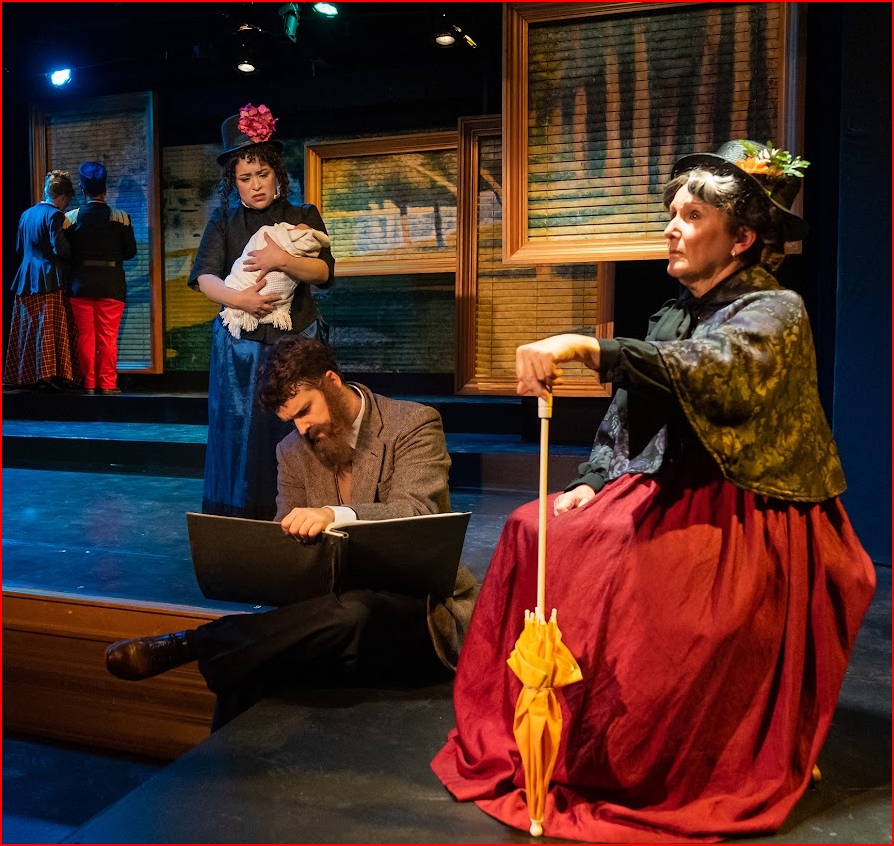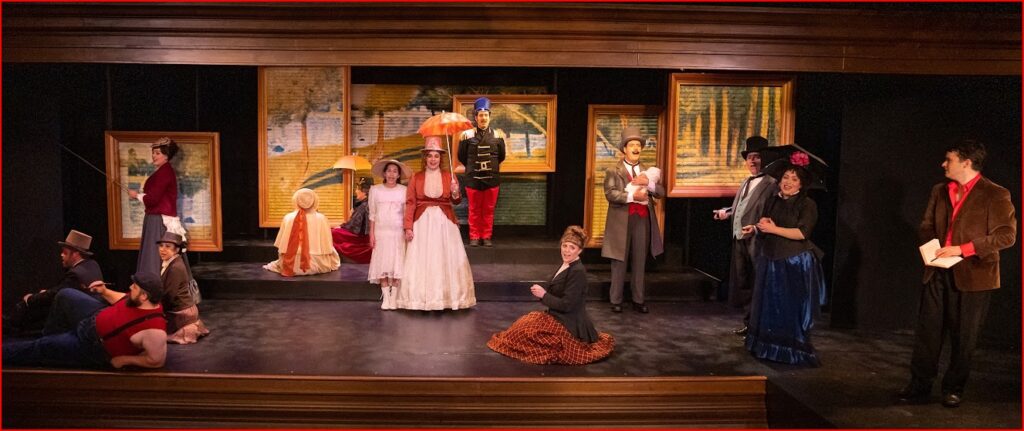By Susan Dunn
Why do we keep going to see Waiting for Godot? Why is it a classic? Is it a comedy or tragedy?
Irish playwright Samuel Beckett himself called it a “tragicomedy.” First written in French in 1948 after the tragedy of WWII, he rewrote it in English, and the new version premiered in 1953 in Paris. In 1998-99, it was voted “most significant English-language play of the 20th century.” (See Wikipedia https://en.wikipedia.org/wiki/Waiting_for_Godot)
How can a classic play begin with the ordeal of taking off a tight boot? Thus do our two protagonists, Estragon and Vladimir, affectionately known to each other as Gogo and Didi—with subtle resonances to Ego and ID—welcome us to their world. Immediately, we see how this inseparable pair weaves their totally disparate personalities into a fragile whole.
“… we sit in rapt wonder …”
Estragon (David Scott) is a man of few words but full of grimaces, contortions, moods and physical needs. He beckons help from Vladimir (ably performed by Evan Winet) with the boot, only to be met with his partner’s distractions, dissertations, memories, mental musings, and questions.
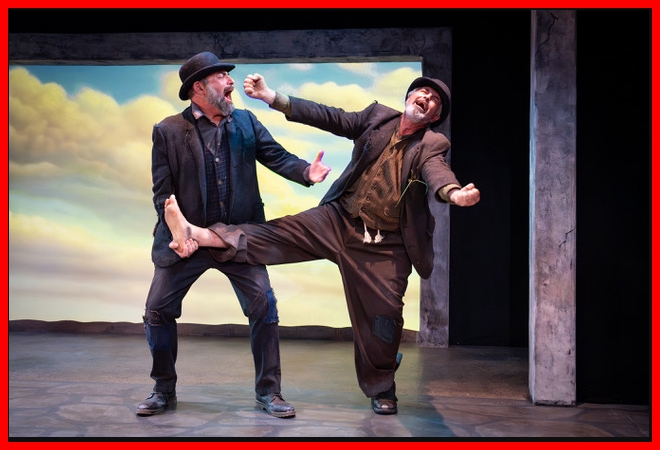
The pair’s interactions are conversational banalities, passing time until they can achieve their main objective. They must meet with a man called Godot, whom they may have met before, or not, whose persona is never fully described. What Godot will do for them when they meet is a mystery. Their lives are circumscribed by their poor physical conditions. Vladimir has urinary distress issues which can be triggered by mentions of a French brothel, and Estragon is always looking for a good sleep to make up for being beaten in his bed in a ditch.
The pair meet up with a slave driver, Pozzo, driving his luckless vassal Lucky with a long rope and whip. They are off to the market where capitalist Pozzo wants to sell his menial for profit. Lucky remains mute until Pozzo commands him to think. This command unleashes a stream of strange movements and phrases which sound impressive but devolve into nonsense. As they depart, Vladimir and Estragon continue their time-killing repartees until a messager boy appears and reveals that Godot is not coming that day. Thus ends Act I and sets us up for a near repeat of this drama in Act II.
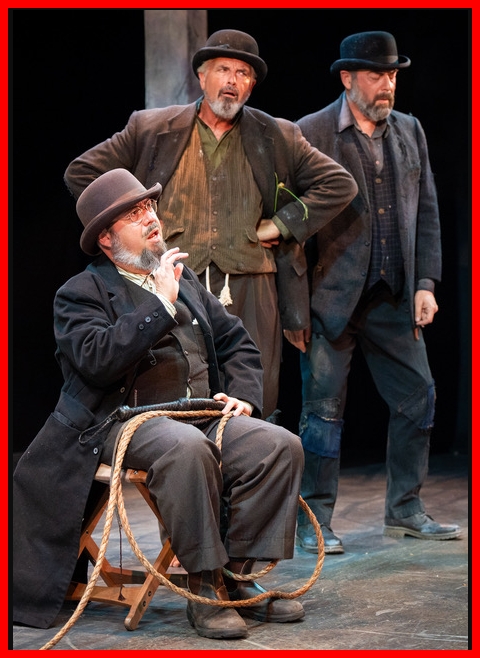
Productions of Waiting for Godot are variously treated on a continuum between comedy and tragedy. Los Altos Stage has an irrepressive comic in David Scott, who simply cannot stop his various mannerisms and moods, removing clothes, eating vegetables with panache and reaching out to the bemused Vladimir with impish delight and affection.
His physicality is matched by the continual stream of mental outlay of trivia from his more subdued partner, Vladimir, ably performed by Evan Winet. There is a Keystone Cops charm about this duo that masks some of the angst of the unknowing and disappointment that Godot hasn’t seen them that is at the heart of the play. Vladimir yearns to know and be known by Godot so that his existence can be validated and understood, so that life is not totally random and meaningless.
The iconic set of a bare tree and a rock—one of the barest stage sets in theater—is also a revelation at Los Altos Stage. Ringed with stark geometric structural frames, it pulls us into a tight barren place that could be a desert, but lit behind by the moon and clouds, its charm is a huge world of beauty and space.
There is often a moment, or perhaps many moments, when we wonder “Why are we here? Nothing is going on.” This play is a shrine to the human condition of wanting to know the elusive meaning of existence and who controls it. And like the moth who is about to be consumed by the flame, we sit in rapt wonder, waiting for that meaning, that we think only Godot can reveal, all the time knowing that it is the waiting itself that is meaningful.
-30-
 ASR Sr. Contributor Susan Dunn has been on the executive boards of Hillbarn Theatre, Altarena Playhouse, Berkeley Playhouse, Virago Theatre and Island City Opera, where she is a development director and stage manager. An enthusiastic advocate for new productions and local playwrights, she is a voting member of the SF Bay Area Theatre Critics Circle, and a recipient of a 2015 Alameda County Arts Leadership Award. Contact: [email protected]
ASR Sr. Contributor Susan Dunn has been on the executive boards of Hillbarn Theatre, Altarena Playhouse, Berkeley Playhouse, Virago Theatre and Island City Opera, where she is a development director and stage manager. An enthusiastic advocate for new productions and local playwrights, she is a voting member of the SF Bay Area Theatre Critics Circle, and a recipient of a 2015 Alameda County Arts Leadership Award. Contact: [email protected]
| Production | Waiting for Godot |
|---|---|
| Written by | Samuel Beckett |
| Directed by | Gary Landis |
| Producing Company | Los Altos Stage Co. |
| Production Dates | Thru Sept. 29th |
| Production Address | 97 Hillview Ave., Los Altos, CA |
| Website | losaltosstage.org |
| Telephone | 650.941.0551 |
| Tickets | $28-$51 |
| Reviewer Score | Max in each category is 5/5 |
| Overall | 4/5 |
| Performance | 4/5 |
| Script | 4.5/5 |
| Stagecraft | 4/5 |
| Aisle Seat Review PICK? | YES! |





